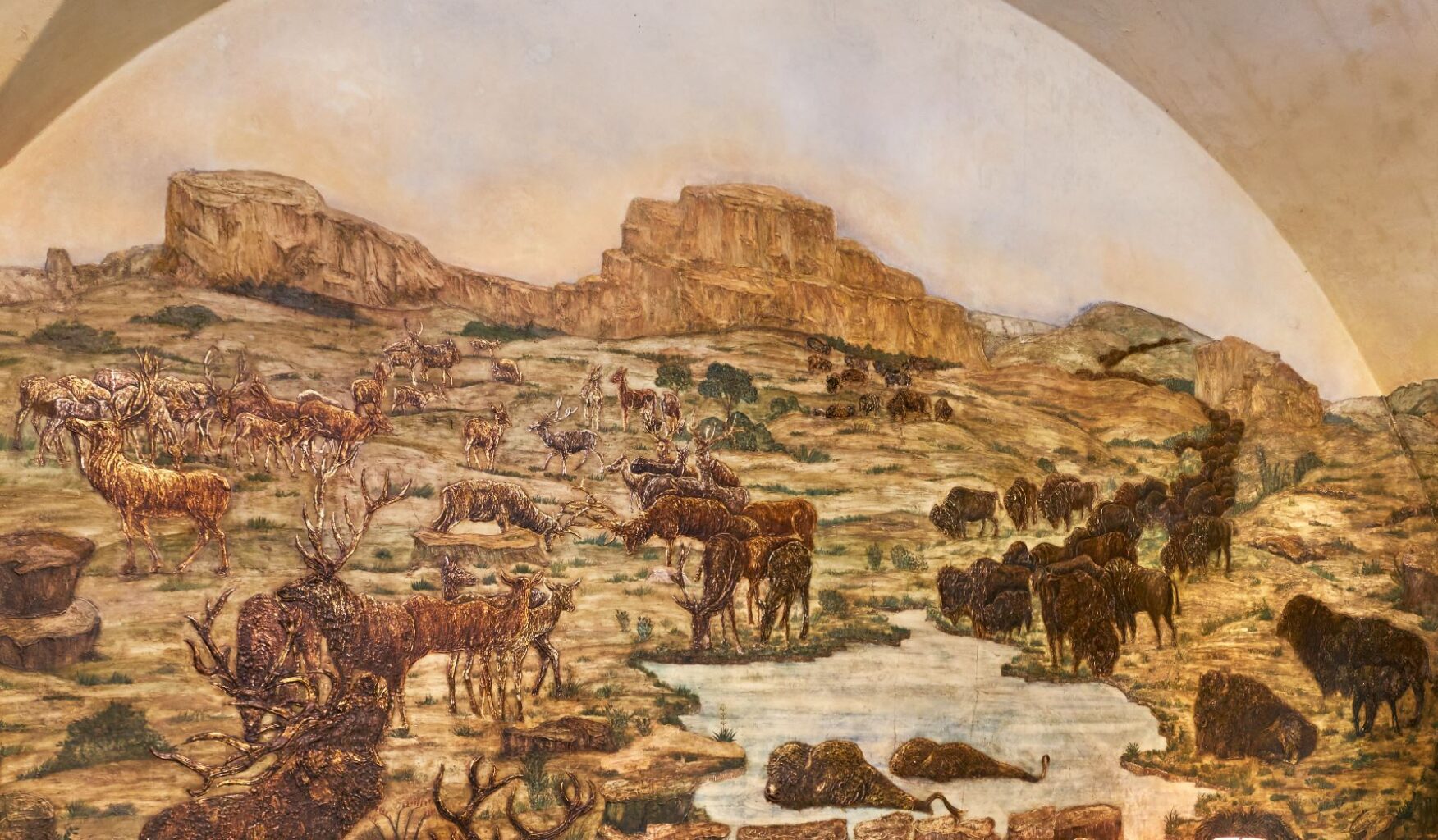When visiting Planting Fields, the influence of European traditions that shaped the site’s making is more than evident. It’s the reason that so many of us feel transported to another time and place when coming to the estate. The architecture of Coe Hall, the decorative arts collection and the landscape are emblematic of long gone English traditions. The estate follows the paradigm of Gilded Age estates in many ways, yet in one aspect it is very avant-garde and American – the Coes looked backwards and forwards simultaneously. They celebrated the past but also had their finger on the pulse of contemporary culture. Artists and decorators like Everett Shinn, Robert Winthrop Chanler, Samuel Yellin and Elsie de Wolfe were all engaged to create site-specific work for Planting Fields. These creatives added something distinctly American to a predominantly English-inspired estate.
Robert Winthrop Chanler was a bon-vivant and a member of the famed Astor Orphan clan who grew up in the Hudson Valley. As the late NYT’s columnist Christopher Gray wrote about Chanler, he “lived big, painted big, loved big and was just plain big.” Chanler was without question a larger than life personality and his outlandish and frenetic artwork were prized possessions and even a “proof of wealth” as one contemporary journal noted. In the 1910s, Chanler decorated rooms of some of the finest interiors at the time. Unfortunately, only a handful survive, with Planting Fields’ Buffalo Room being one of two sites that are accessible to the public.
In 1918 William and Mai Coe engaged Chanler to create an homage to Wyoming, a place that they and their children would spend many happy summers. The Buffalo Room is a representation of William Coe’s love of the west. A few years later, Chanler was invited to decorate Mai Coe’s bedroom, which was being designed by Elsie de Wolfe. The original canvases don’t survive but several years ago a scenic painter was invited to recreate them.
Chanler’s innovative and experimental techniques resulted in an exquisite luminosity and tonality of color. He incorporated metallic powders in much of his work and built up shapes in plaster, adding a sculptural quality to his creations. The challenge, but perhaps not a surprise, with Chanler’s work is that there is very little regard for legacy in his material choices. For example, he created an underwater fantasy for a ceiling mural at Vizcaya. It’s fabulous except it is made of water-soluble paint, is situated above a pool and is located feet from the bay. Here at Coe Hall, conservators have been battling the environmental conditions for decades. The fluctuating temperature has been the primary cause of the mural’s degradation. Fortunately, through our partnership with New York State Department of Parks, Recreation and Historic Preservation, an environmental control system has been developed and the mural has been stable for some time now.
Chanler’s biography is as lively as his art. He was on the list to paint the heavens of Grand Central Station but was famously quoted saying “I wouldn’t advise any navigator to set his compass by my skies”. We certainly get the impression that Chanler did everything his way. If you’re interested in learning more about Robert Winthrop Chanler, please check pick up a copy of Robert Winthrop Chanler: Discovering the Fantastic, published in 2016. And on your next visit to Coe Hall, make sure you take a closer look at the golden creatures in the Buffalo Room.
Planting Fields Foundation Staff

